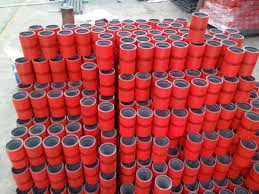- Afrikaans
- Albanian
- Amharic
- Arabic
- Armenian
- Azerbaijani
- Basque
- Belarusian
- Bengali
- Bosnian
- Bulgarian
- Catalan
- Cebuano
- Corsican
- Croatian
- Czech
- Danish
- Dutch
- English
- Esperanto
- Estonian
- Finnish
- French
- Frisian
- Galician
- Georgian
- German
- Greek
- Gujarati
- Haitian Creole
- hausa
- hawaiian
- Hebrew
- Hindi
- Miao
- Hungarian
- Icelandic
- igbo
- Indonesian
- irish
- Italian
- Japanese
- Javanese
- Kannada
- kazakh
- Khmer
- Rwandese
- Korean
- Kurdish
- Kyrgyz
- Lao
- Latin
- Latvian
- Lithuanian
- Luxembourgish
- Macedonian
- Malgashi
- Malay
- Malayalam
- Maltese
- Maori
- Marathi
- Mongolian
- Myanmar
- Nepali
- Norwegian
- Norwegian
- Occitan
- Pashto
- Persian
- Polish
- Portuguese
- Punjabi
- Romanian
- Russian
- Samoan
- Scottish Gaelic
- Serbian
- Sesotho
- Shona
- Sindhi
- Sinhala
- Slovak
- Slovenian
- Somali
- Spanish
- Sundanese
- Swahili
- Swedish
- Tagalog
- Tajik
- Tamil
- Tatar
- Telugu
- Thai
- Turkish
- Turkmen
- Ukrainian
- Urdu
- Uighur
- Uzbek
- Vietnamese
- Welsh
- Bantu
- Yiddish
- Yoruba
- Zulu
well casing coupling
Understanding Well Casing Couplings Essential Components in Oil and Gas Drilling
Well casing and coupling play a critical role in the oil and gas industry, serving as foundational components that ensure the integrity and safety of drilling operations. In this article, we will delve into the definition, types, functions, installation, and maintenance of well casing couplings, ultimately shedding light on their significance in the drilling process.
What is Well Casing?
Well casing refers to a series of steel pipes installed within a drilled wellbore. These pipes form a protective barrier between the wellbore and the surrounding geological formations. The primary purpose is to support the well structure, prevent the collapse of the borehole, and isolate different pressure zones. It also safeguards freshwater aquifers and prevents the contamination of the surrounding environment by hydrocarbons.
What are Well Casing Couplings?
Well casing couplings are small but crucial components used to connect two lengths of casing or tubing. These threaded pipes provide a mechanical joint that facilitates the extension of casing strings, ensuring that the wellbore remains stable even under high pressures and varying temperatures. Without these couplings, the structural integrity of the well would be compromised, posing serious risks to drilling safety and efficiency.
Types of Casing Couplings
Casing couplings come in various types, each engineered for specific applications
1. Threaded Couplings These are the most common type, featuring external threads that connect to the internal threads of the casing pipes. They can be classified into different thread profiles, including API (American Petroleum Institute) and premium threads, which are designed to resist wear and minimize leakage.
2. Welded Couplings In certain applications, welded couplings may be used where a more robust connection is necessary. These couplings are typically welded directly onto the casing pipe, providing enhanced sealing and strength.
3. Sock Couplings These ensure a snug fit between casing strings. Sock couplings are often used in situations where dimensional tolerance is critical.
4. Heavy-Duty Couplings For high-pressure applications, heavy-duty couplings are employed. They are designed to withstand extreme conditions and provide extra support to the casing structure.
Functions of Casing Couplings
well casing coupling

The primary functions of well casing couplings include
- Sealing They prevent the escape of fluids and gases, protecting the well environment. A tight seal is essential to avoid blowouts or loss of pressure.
- Alignment Couplings maintain the alignment of casing strings, which is crucial for the overall stability of the well.
- Load Distribution They help distribute the weight and pressure exerted on the casing, ensuring that no single section undergoes excessive stress.
- Flexibility Couplings allow for slight movements and adjustments during drilling operations, accommodating any shifts in soil or rock formations.
Installation and Maintenance
Proper installation and maintenance of casing couplings are vital to ensure their effectiveness
1. Installation Couplings should be installed according to the manufacturer’s specifications. This includes proper torque settings to ensure that the threads are adequately engaged without being over-tightened, which could lead to thread stripping.
2. Inspection Regular inspections are crucial to detect any wear, corrosion, or damage to the couplings. Early identification of these issues can prevent failure during drilling operations.
3. Lubrication Applying appropriate thread lubricants can enhance the performance of the couplings and extend their lifespan.
4. Replacement Over time, couplings may degrade, necessitating replacements to maintain the integrity of the casing system.
Conclusion
Well casing couplings are small yet vital components in the oil and gas drilling process. Their ability to provide secure connections between casing strings, ensure the seal integrity, and maintain the well's structural stability cannot be overstated. Understanding their types, functions, and maintenance practices is essential for anyone involved in drilling operations. As the oil and gas industry continues to evolve, the importance of high-quality casing couplings will remain a cornerstone of safe and efficient drilling activities.
-
Tubing Pup Joints: Essential Components for Oil and Gas OperationsNewsJul.10,2025
-
Pup Joints: Essential Components for Reliable Drilling OperationsNewsJul.10,2025
-
Pipe Couplings: Connecting Your World EfficientlyNewsJul.10,2025
-
Mastering Oilfield Operations with Quality Tubing and CasingNewsJul.10,2025
-
High-Quality Casing Couplings for Every NeedNewsJul.10,2025
-
Boost Your Drilling Efficiency with Premium Crossover Tools & Seating NipplesNewsJul.10,2025







